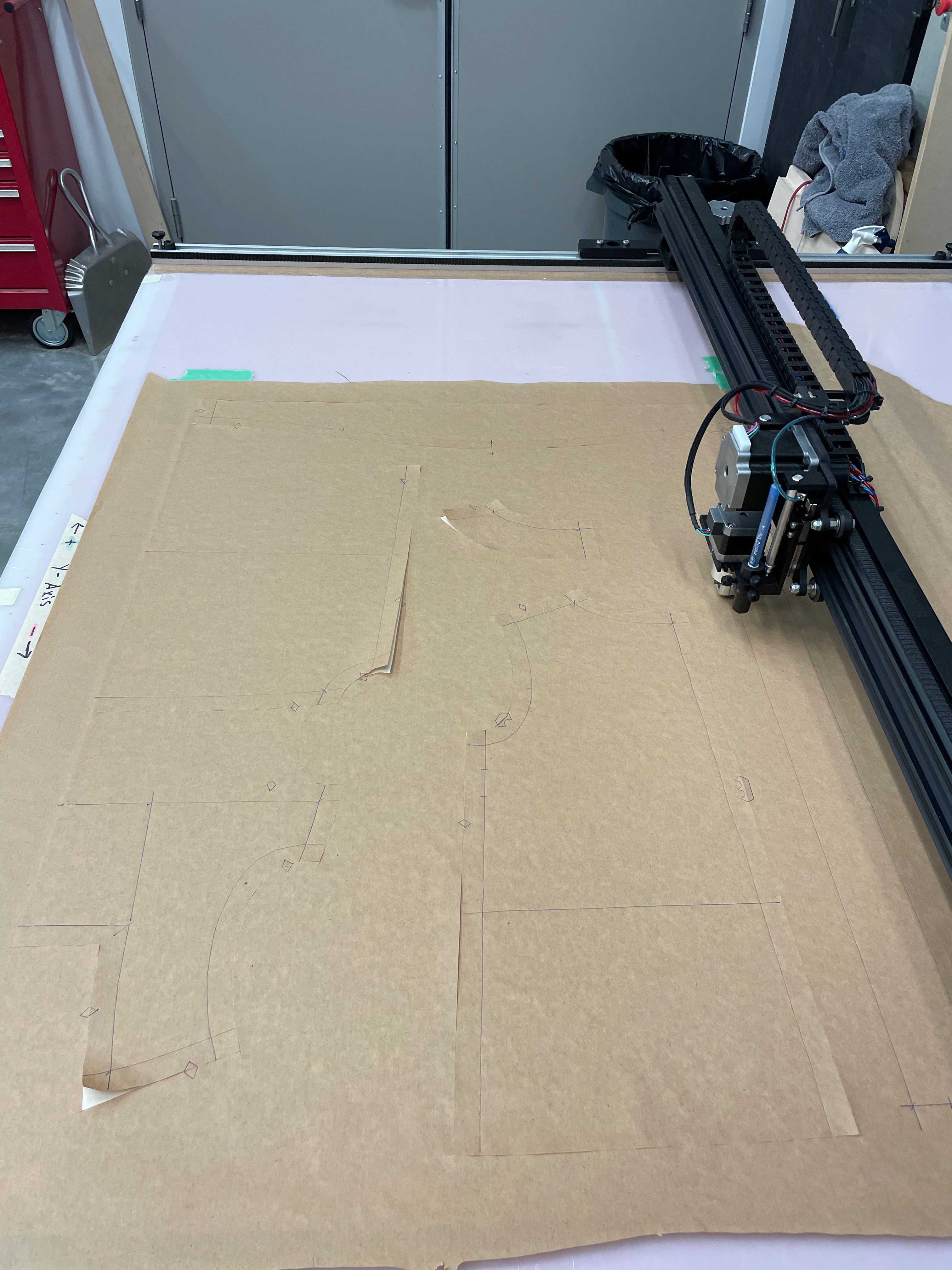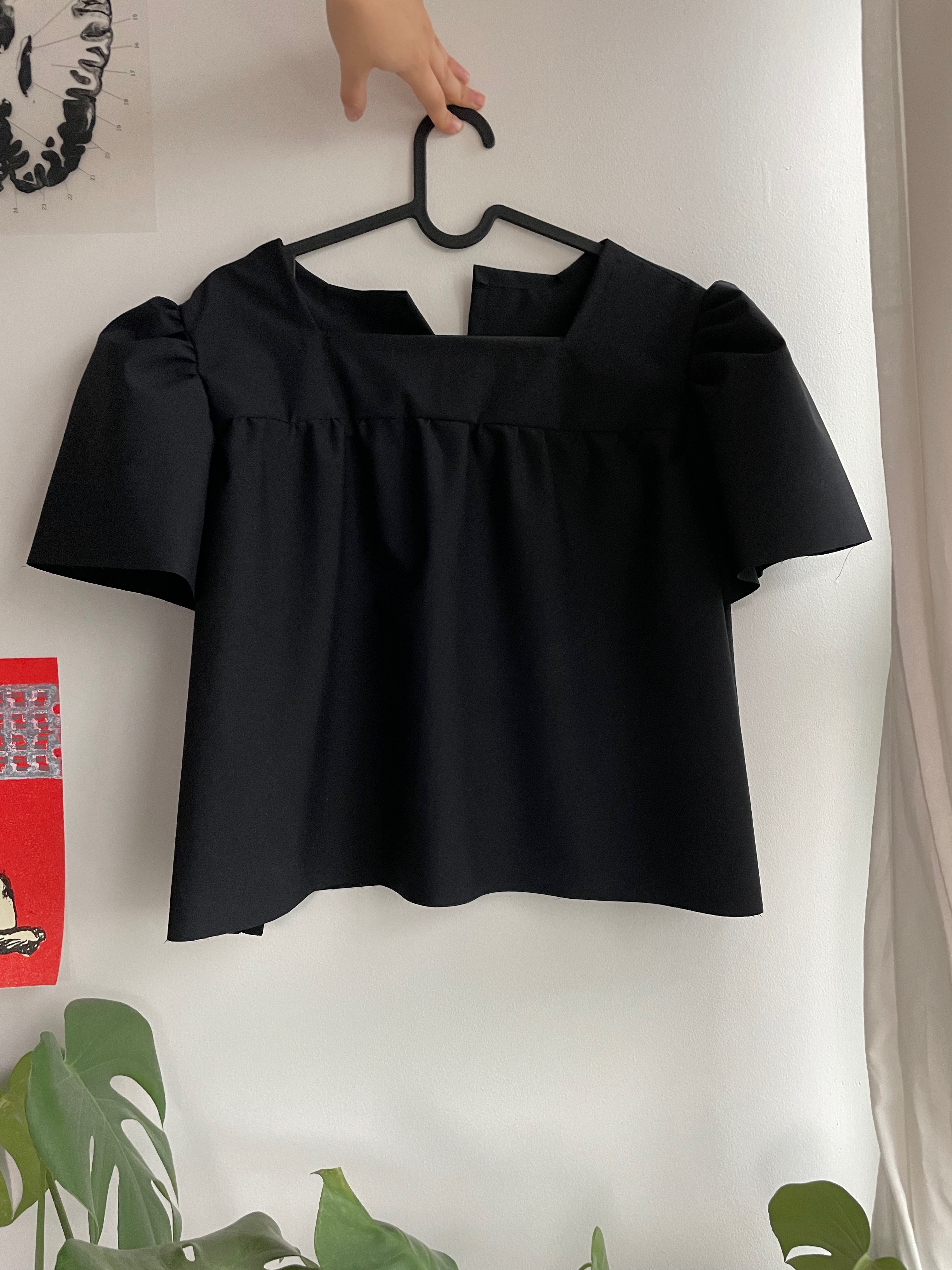New Craft - Making to Know
2023
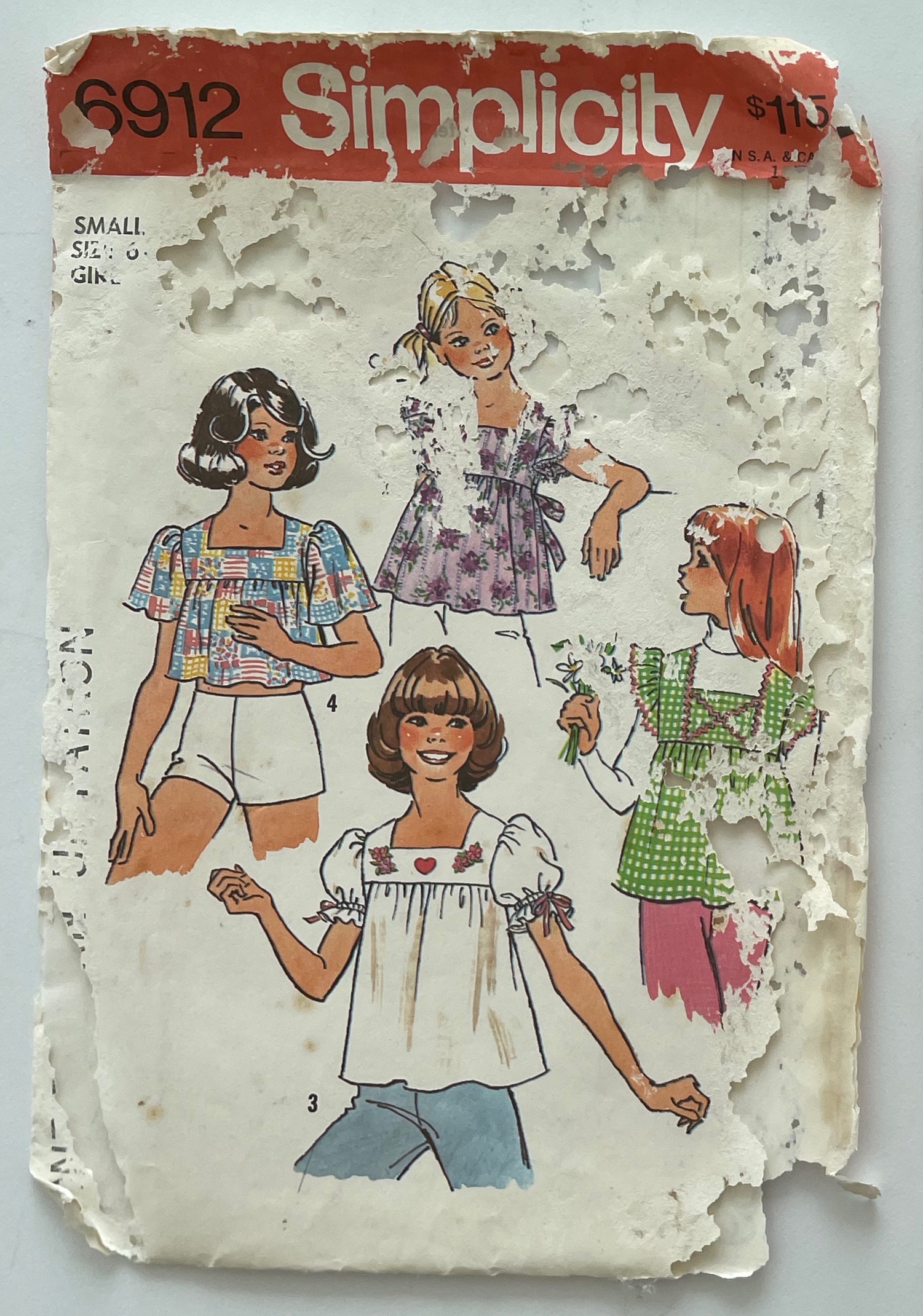
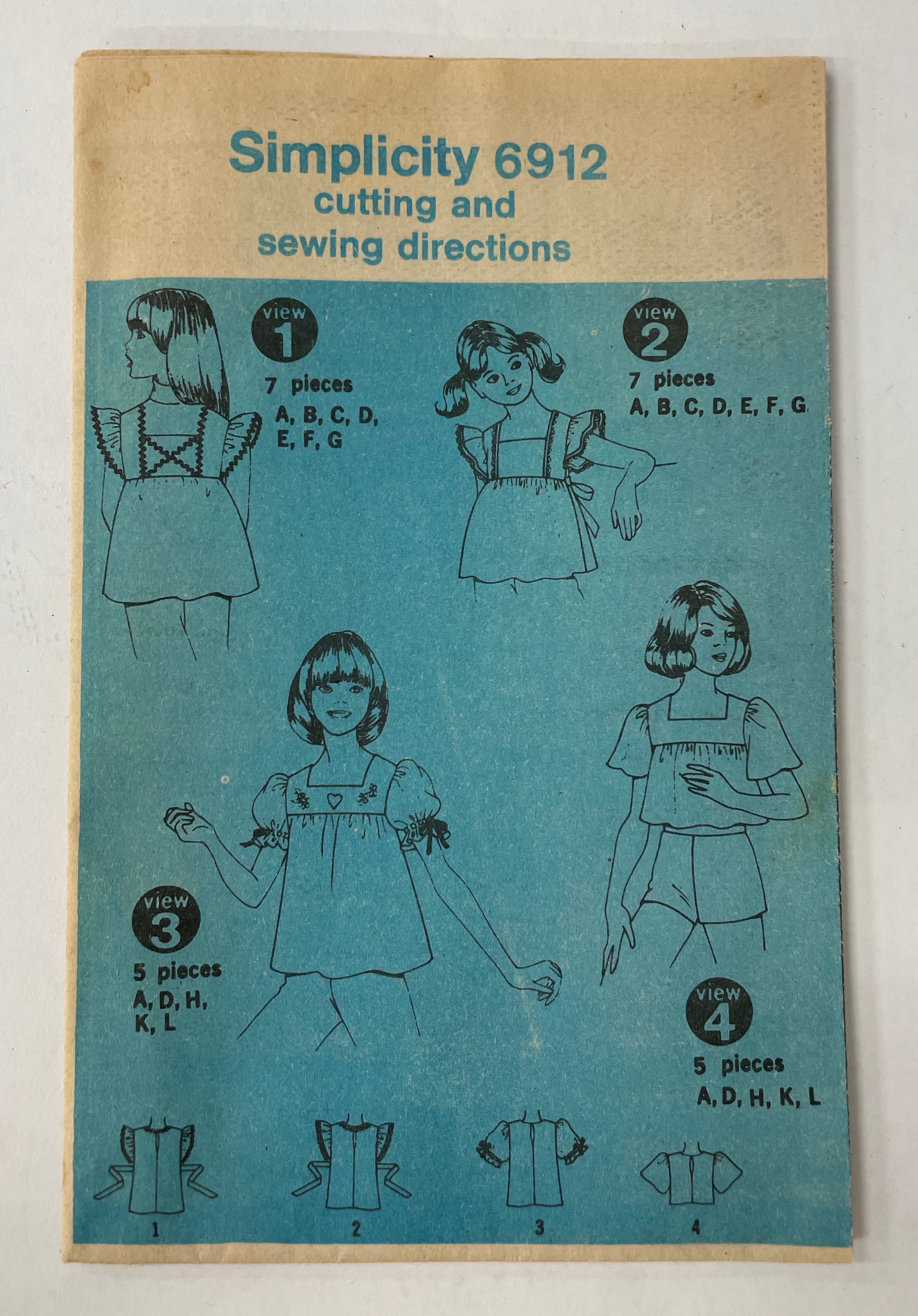
Explorative Material & Technologies Research Project
New Craft - "integrating traditional crafts (embodied knowledge) and industrial mass-production processes and techniques to emerge as a multi-faceted discipline integrating people, material practice (making), ecological concerns, sustainability, social agency and change."
Intro: In my practice, I find that I am constantly inspired by found objects. I see value and potential in pre-existing objects as they always inform something new. These vintage sewing patterns that I found second hand, inspired me. They are visually interesting on their own, but I wanted to translate the original craft to new craft.
Process: My research plan: explore to discover. I started by digitizing the vintage paper pattern using the plotter to scan the pattern pieces, creating a digitized vector of each piece. With this version, I explored putting the pieces into CLO (fashion 3D model software) and modeling / rendering the garment. I then used the plotter to cut and plot the digital pattern pieces. This allowed me to then sew the actual garment. Since the garment is for a child size, my next challenge was modifying the digital pattern which I then also plotted and sewed.
Repair & Restoaration as a Form of Craft: I find the transition from 2D to 3D and analog to modern technology is an interesting parallel that takes from an original craft archive to then be archived in a modern/ digitized way. This is a way of preserving and prolonging the original artifact/ craft. The pattern I used is old, fragile and close to it’s end. Through creating a digitized version of this pattern, I was able to restore it’s value and prolong it’s use. It also extends the patterns use to new possibilities to be manipulated and modified to a contemporary context.
Reflection: My process was intuitive, which I find is the start to discover any craft. Responding to the things in front of us, their properties/ qualities inform us of how to respond. In this case, I was responding to an artifact that has already been used to craft. The artifact holds pre-existing information and affordances on how to use it. My challenge was rethinking the approach.
Project Type: Research
Material: Vintage Paper Patterns, Fabric
Processes: Plotter Cutter/ Scanning Function, Pattern Digitization, CLO Software, Sewing
New Craft - "integrating traditional crafts (embodied knowledge) and industrial mass-production processes and techniques to emerge as a multi-faceted discipline integrating people, material practice (making), ecological concerns, sustainability, social agency and change."
Intro: In my practice, I find that I am constantly inspired by found objects. I see value and potential in pre-existing objects as they always inform something new. These vintage sewing patterns that I found second hand, inspired me. They are visually interesting on their own, but I wanted to translate the original craft to new craft.
Process: My research plan: explore to discover. I started by digitizing the vintage paper pattern using the plotter to scan the pattern pieces, creating a digitized vector of each piece. With this version, I explored putting the pieces into CLO (fashion 3D model software) and modeling / rendering the garment. I then used the plotter to cut and plot the digital pattern pieces. This allowed me to then sew the actual garment. Since the garment is for a child size, my next challenge was modifying the digital pattern which I then also plotted and sewed.
Repair & Restoaration as a Form of Craft: I find the transition from 2D to 3D and analog to modern technology is an interesting parallel that takes from an original craft archive to then be archived in a modern/ digitized way. This is a way of preserving and prolonging the original artifact/ craft. The pattern I used is old, fragile and close to it’s end. Through creating a digitized version of this pattern, I was able to restore it’s value and prolong it’s use. It also extends the patterns use to new possibilities to be manipulated and modified to a contemporary context.
Reflection: My process was intuitive, which I find is the start to discover any craft. Responding to the things in front of us, their properties/ qualities inform us of how to respond. In this case, I was responding to an artifact that has already been used to craft. The artifact holds pre-existing information and affordances on how to use it. My challenge was rethinking the approach.
Project Type: Research
Material: Vintage Paper Patterns, Fabric
Processes: Plotter Cutter/ Scanning Function, Pattern Digitization, CLO Software, Sewing
Process...
Digitizing the Pattern Peices:
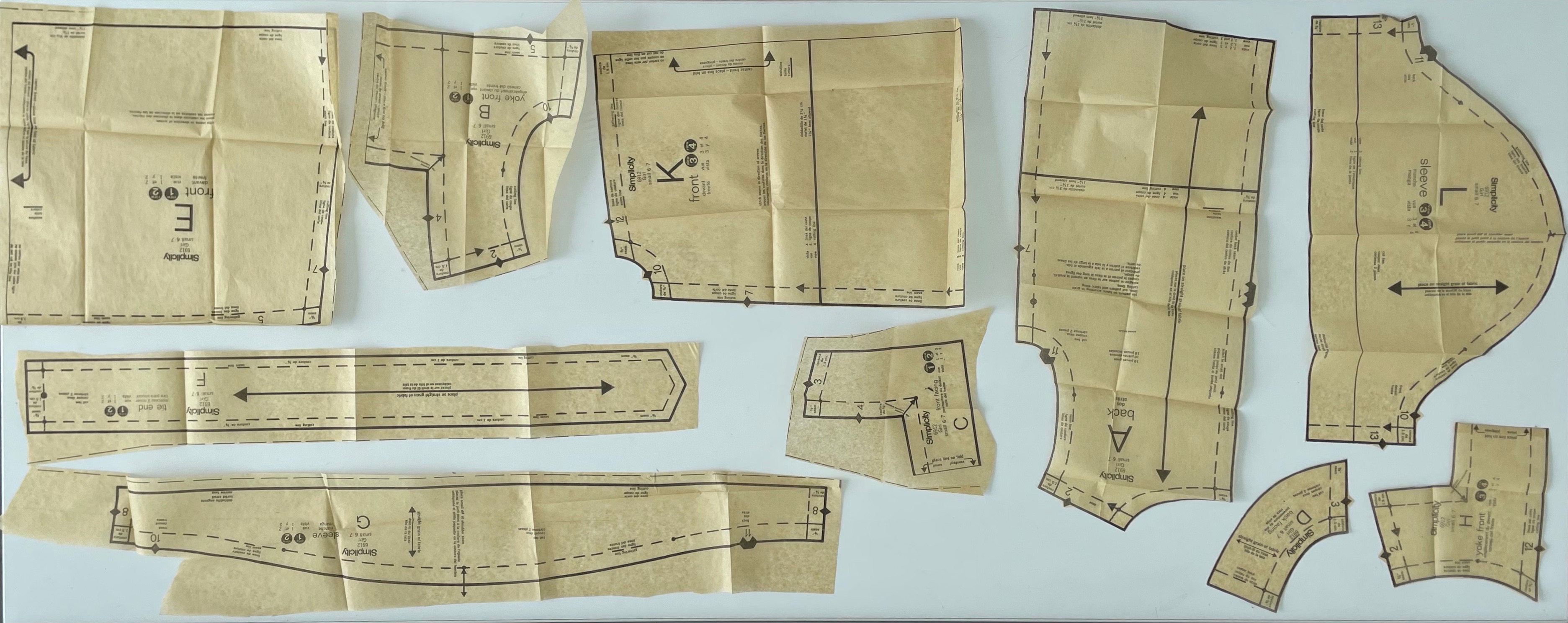
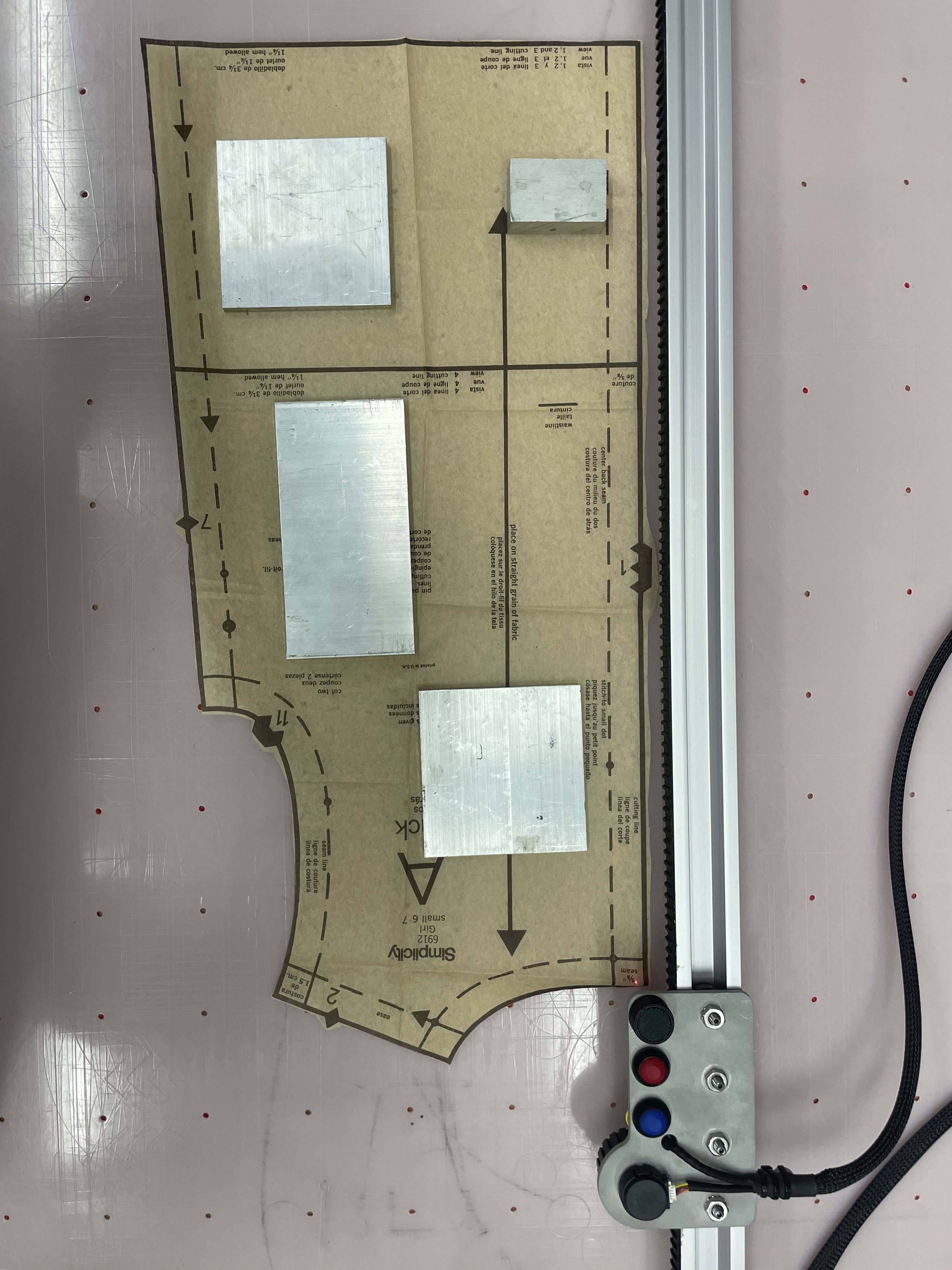
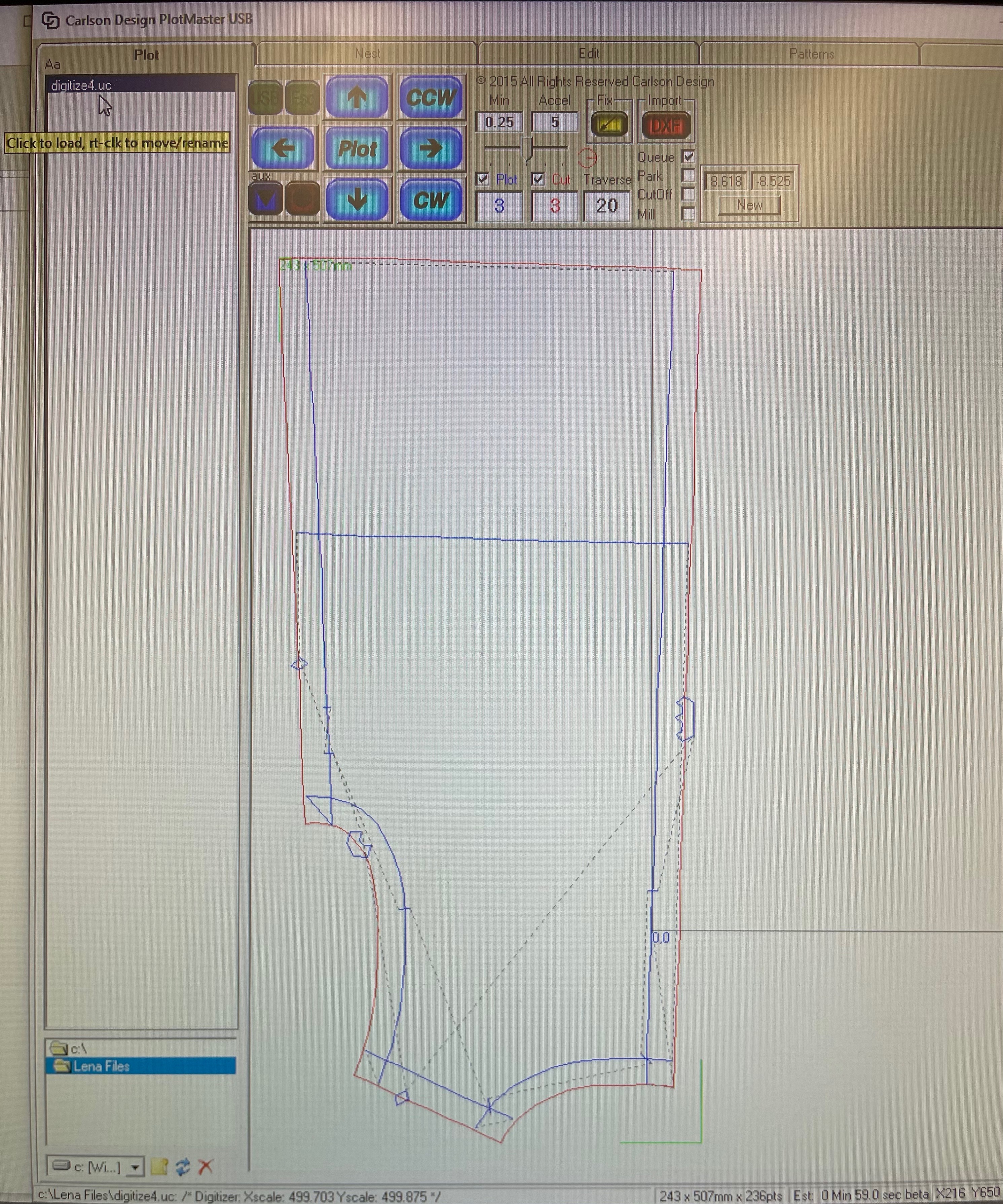
CLO 3D Software:
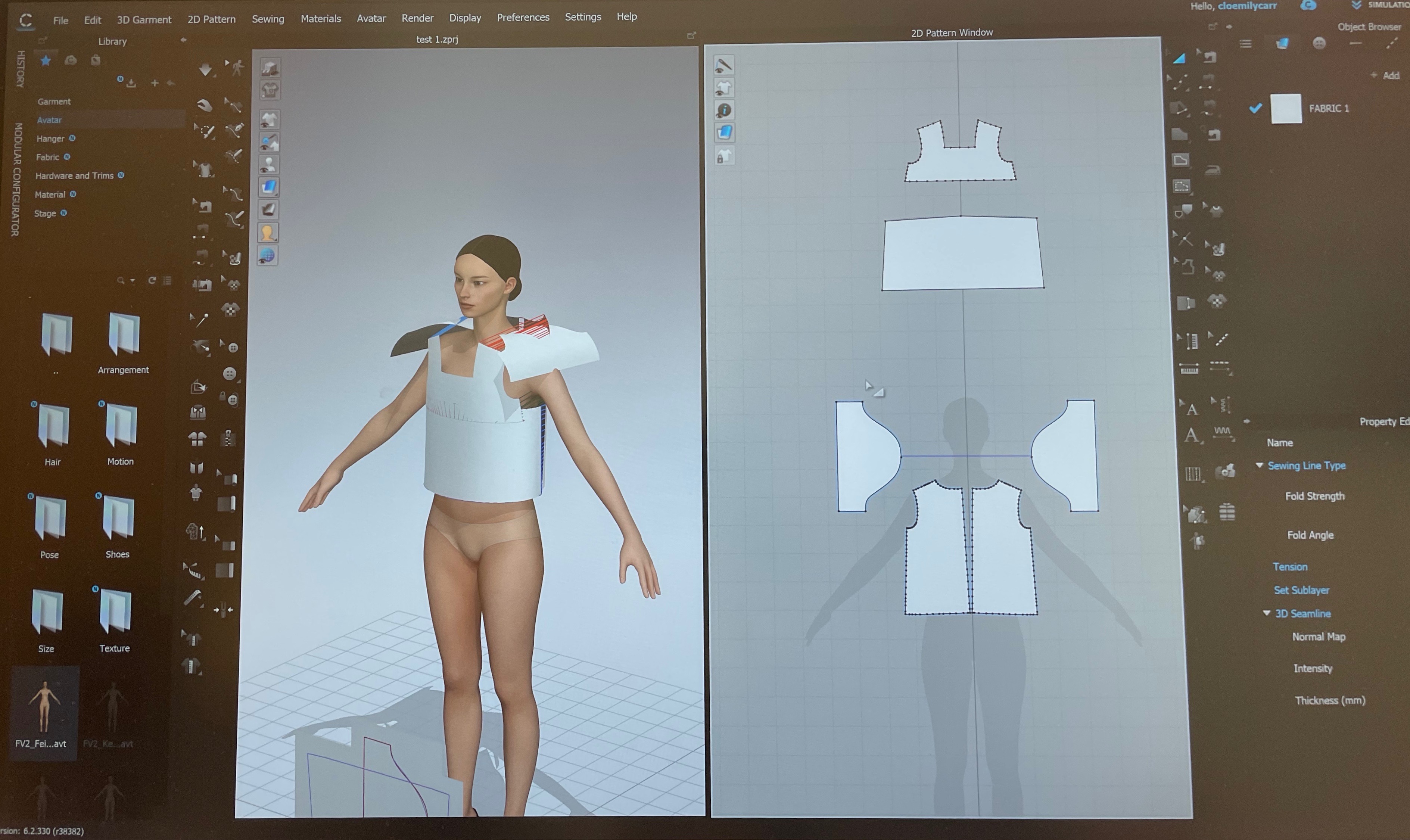
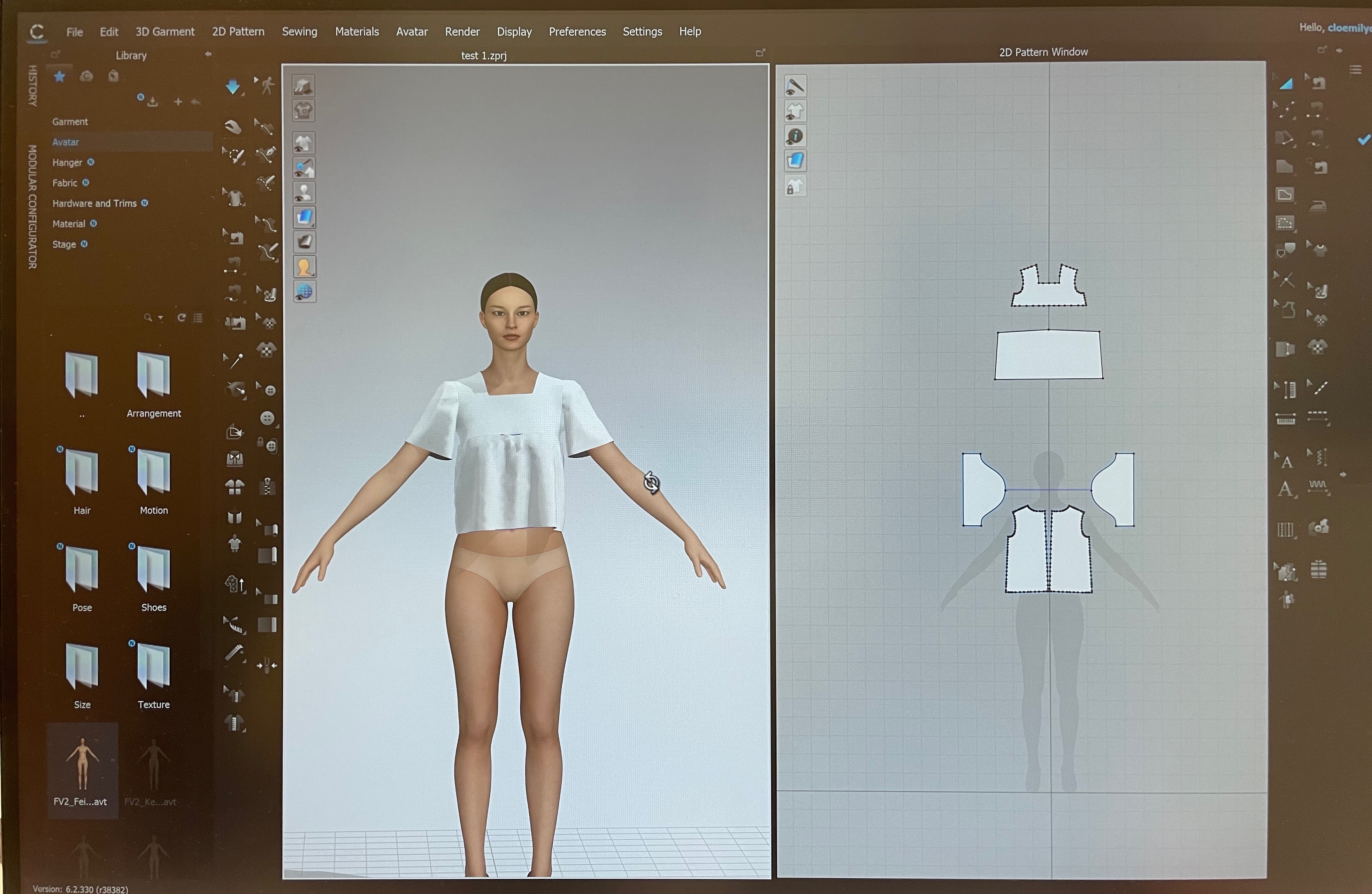
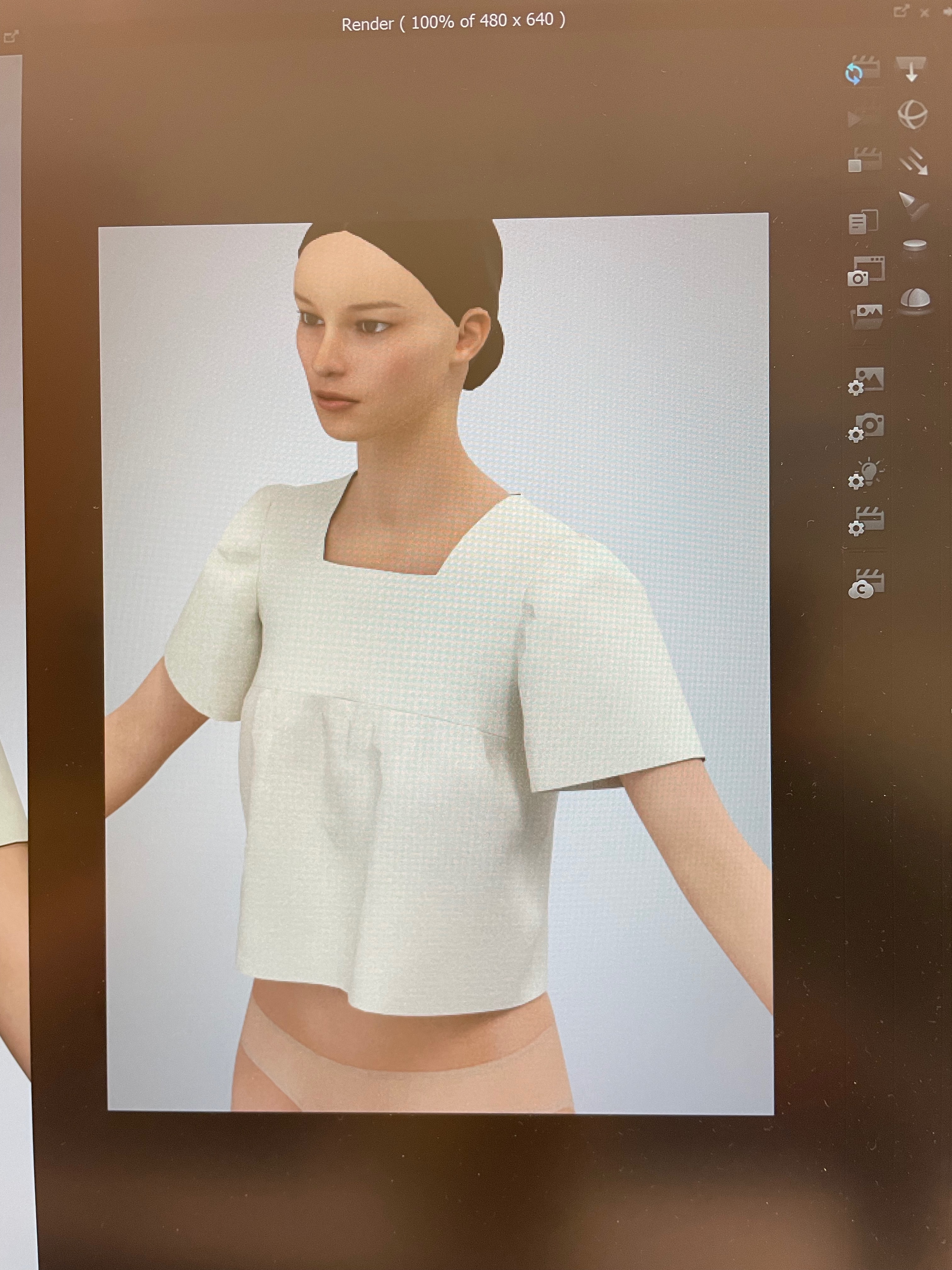
Plotting:
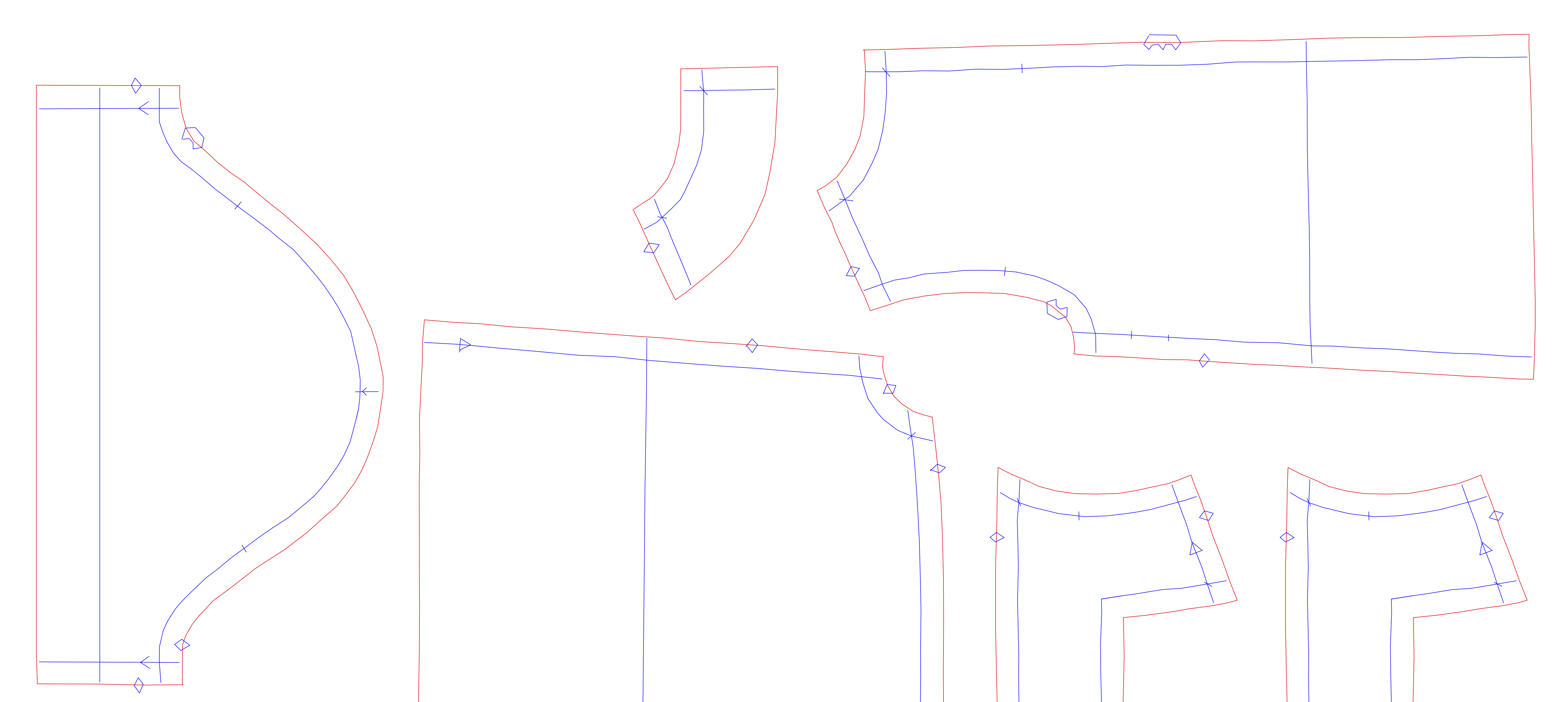
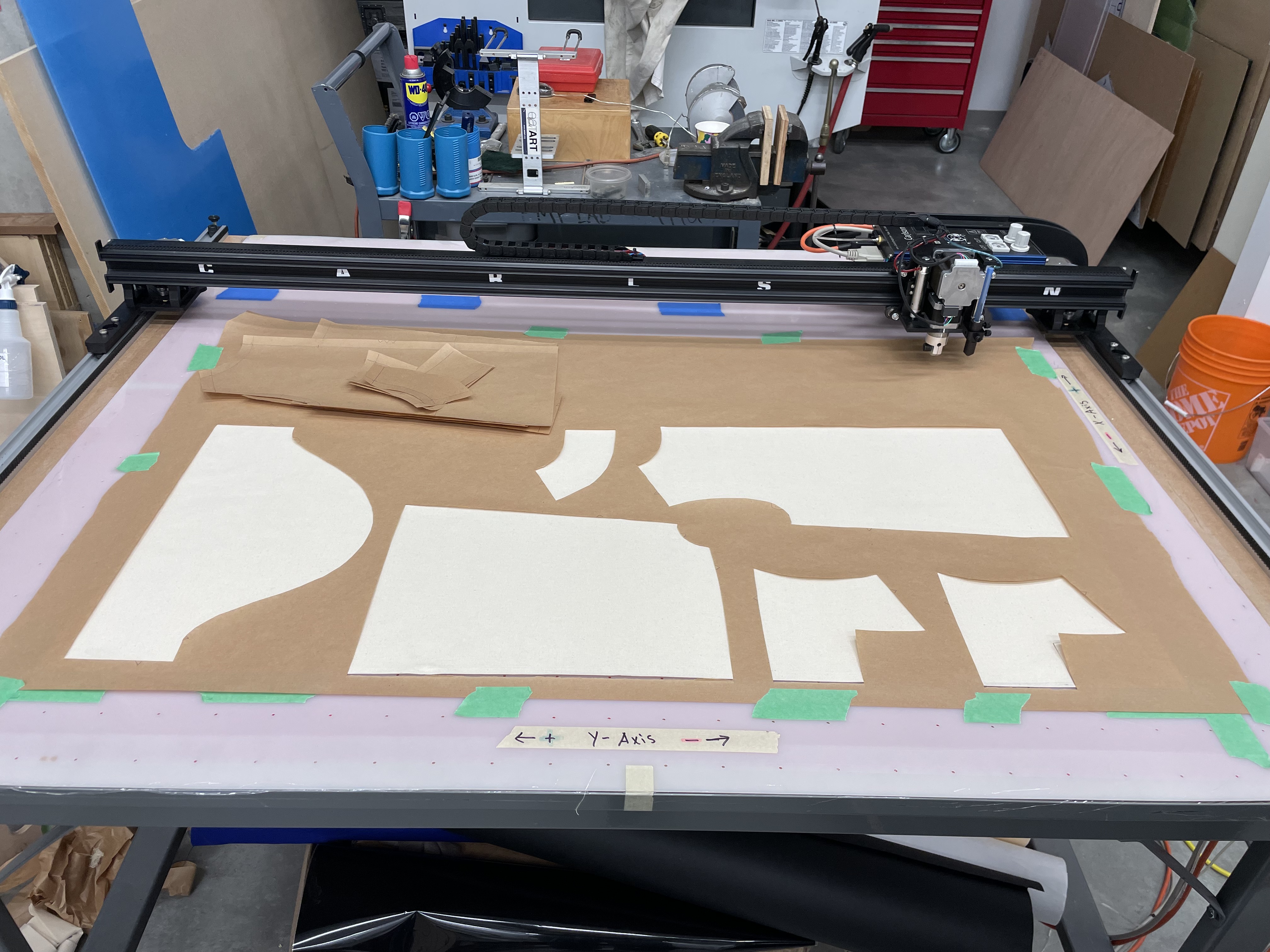
Sewing:
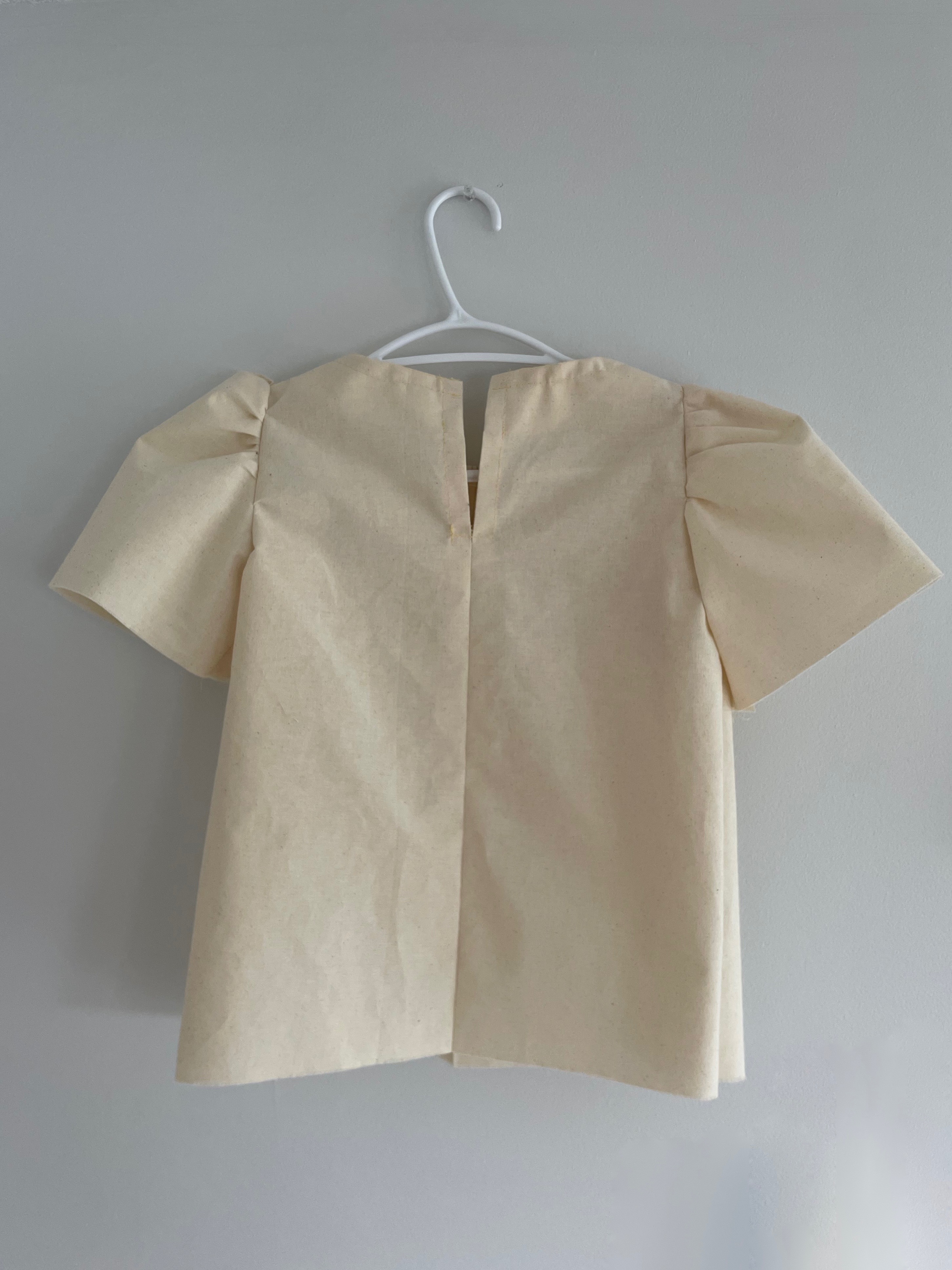
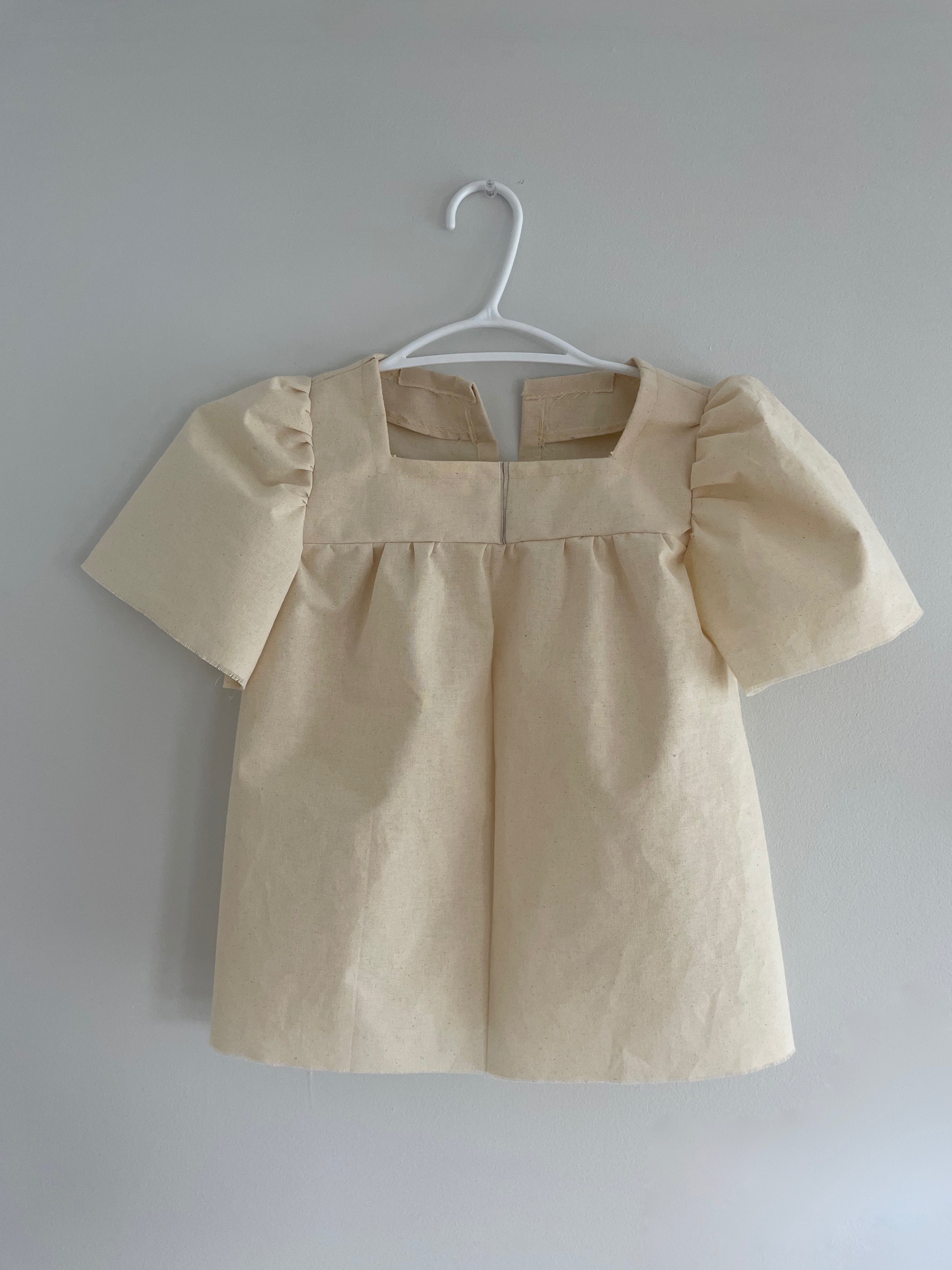
Grading:

